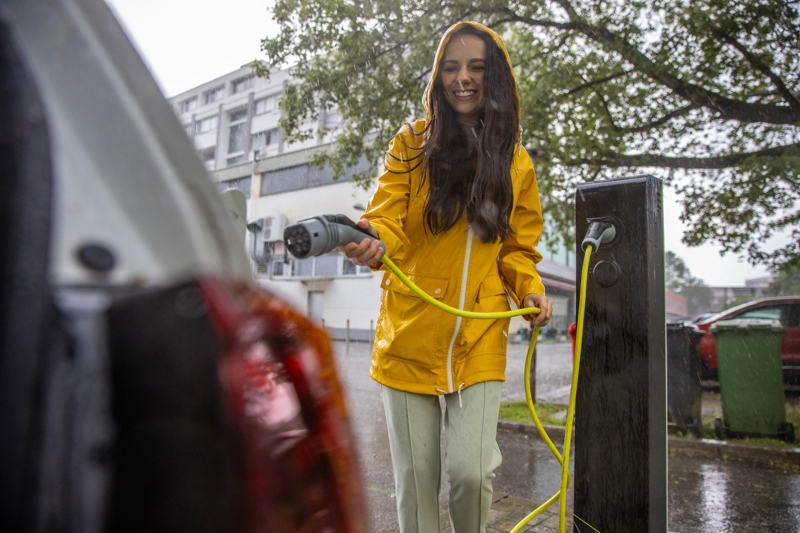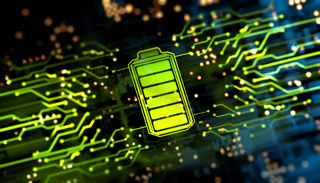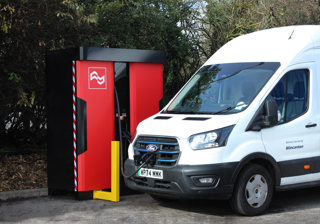
When it comes to battery electric vehicles (BEVs), fleet decision-makers tend to be among the best-informed people in the country.
And they need to be: fleets are setting the pace when it comes to electrification as organisations strive to lower emissions and costs and be ahead of the game when it comes to the 2030 ban on the sale of conventional petrol and diesel cars and vans.
However, not all fleets and company car drivers are enthusiastically embracing the technology.
Some of their opposition is rooted in traditional arguments against BEVs, such as cost, insufficient driving range and confusion over types of charging cables and the number of apps needed to charge a vehicle on the public network.
In this feature, we look at six of the most common concerns, in a bid to examine what the truth is and help fleet decisionmakers accelerate their transition to BEVs.
1 EVs are too expensive
When considered purely from the point of the vehicle purchase price, this would be a borderline open and shut case: as a general rule, BEVs typically have a retail price several thousand pounds higher than their petrol or diesel counterpart.
These increased prices are also reflected in their lease rates, making an electric car seemingly more expensive to add to a fleet than an ICE (internal combustion engine) model. The difference in cost for a zero-emission van is even higher.
However, EVs have significantly lower running costs through ‘fuel’ and reduced maintenance, which can offset these increased leasing costs.
Analysis for Fleet News by Deloitte shows that compared to a £31,275 ICE car, a £36,550 BEV will cost £1,828 more over a three-year/60,000-mile lease if just lease rentals, maintenance and insurance are taken into account.
However, when less visible/obvious costs such as employer Class 1A NICs, VAT recovery and corporation tax relief are considered, the BEV actually costs £2,011 less.
Add back in the fuel differential and the total cost of ownership (TCO) savings rise.
And the margin further rises the longer the vehicle is kept.
A driver also makes significant saving by choosing a BEV: benefit-in-kind tax is much lower than for an ICE car, potentially saving them hundreds of pounds a month, while the cost of fuelling private mileage is also significantly less.
The financial case for BEVs is expected to only grow stronger as it is widely expected they will gain price parity with ICE vehicles in the late 2020s.
VERDICT: Fiction – EV TCO is lower

2 BEVs do not have the battery range to travel as far as people need
This doubt dates back to the early days of BEVs when they had a much smaller range than current models and the public charging infrastructure was barely in existence, making the concept of charging on the go more of a dream than a reality.
This concern about BEVs was often typified by drivers saying, “But can I drive it to Scotland on holiday?”
Since then, the range of vehicles has greatly improved with more than 20 models now available in the UK with an official WLTP range of more than 200 miles, while a growing number of BEVs are offering 300 miles-plus.
For most drivers, these capabilities will be more than enough: the most recent Department for Transport’s National Travel Survey found that 99% of all car journeys in England were less than 100 miles.
There are, of course, exceptions when the duty cycles of a vehicle will not match the ability of a BEV.
This is probably more true in the van sector, where routes are more prescribed, the ranges of vehicles are lower than cars, and the opportunities to charge during the day may be limited.
VERDICT: It depends

3 BEVs cannot be driven or charged in the rain
This is not true. BEVs have to comply with tough technical rules prior to entering the market, including crash and electrical safety, which means they are safe to drive and charge in a wide range of weather conditions.
However, the Office for Zero Emission Vehicles advises drivers should take the usual precautions of following the manufacturer’s instructions, using only the correct charging cable and checking the BEV and cable are not damaged.
It adds that, as with any vehicle, drivers should also consult the owner manual for guidance on the maximum depth of water a car is safe to drive through.
VERDICT: Fiction
4 EVs cannot tow or be towed
As with all cars, BEVs need to go through a type approval process to ensure they are able to tow a caravan or trailer, and an increasing number of them are coming to market with this capability.
However, there are still few electric vans that can tow.
A caravan or trailer towed by a BEV can also display a green number plate. When a BEV is being towed by another vehicle at higher speeds and longer distances, many manufacturers require that they must be towed with the wheels off the ground.
This is also the case for any petrol or diesel vehicle with an automatic gearbox, so it is not a new challenge for vehicle recovery companies.
If a BEV breaks down and is in immediate danger, such as in a live traffic lane, it can be towed slowly a short distance to a safe location to await further assistance, just like any other vehicle.
VERDICT: Fiction

5 The grid will not be able to cope if everyone switches to BEVs
National Grid expects the future demand for electricity by electrifying road transport will grow the current 300 TWh consumed each year by around one-third.
But there are two aspects to whether the electricity grid will cope with the increased demand: whether enough electricity is available and whether the wires that carry that electricity have enough capacity to do so.
The most demand for electricity in recent years in the UK was for 62GW in 2002.
Since then, the nation’s peak demand has fallen by roughly 16% due to improvements in energy efficiency.
National Grid believes even if the UK all switched to BEVs overnight, peak demand would increase by only around 10%, which is still below the 2002 level and “well within the range of manageable load fluctuation”.
“It will be fine,” says Graeme Cooper, head of future markets at National Grid. “Firstly, this is a transition, it is not a cliff edge.
“The grid has been changing tremendously over the past 20 years: there is definitely enough energy and the grid can cope easily.
“The growth in renewable energy means this is not static and smart metering will make this more efficient.
“For example, the growth in wind power from the extra offshore wind farms being developed will adequately meet the future demand for electrifying transport.
“Preparations have been under way for a while as we’ve been discussing how best we can work towards the green transport changeover with government, electricity distribution companies – who transport the energy from the grid to homes and businesses – service station operators and charge point operators.”
The Government has also given Ofgem, the energy regulator, legal responsibilities and powers to deliver an energy system fit for both current and future customers.
Smart charging technologies will also be an important part of ensuring the grid can cope as they allow charging to take place when demand for electricity is lower – for example, at night or when there is a lot of renewable energy on the grid.
This reduces electricity system costs, lowering prices for everyone. The motorist pays less for charging their EV and the electricity powering the EVs is greener.
VERDICT: Fiction
6 There are too many different apps and different types of connectors
The early days of electric vehicles were dogged by horror stories about how many different types of connectors cars used, and the number of apps drivers needed to be able to charge at different public charging networks.
And while there is still an element of this, the situation has improved drastically. All charge points and almost all new EVs use the Type 2 connector for AC charging and the CCS standard for rapid DC charging.
The notable exception is the Nissan Leaf, which uses the Chademo standard, but this can still be charged at more than 95% of public chargepoints, according to analysis from Zap-Map.
The need to have multiple apps for different network operators is also reducing. From 2020, the Government set out its ambition that all new and refurbished rapid charge points had to provide debit or credit card payment.
Later this year, it will lay out legislation to mandate payment roaming which means charge point operators will have to work with each other to ensure consumers can pay without having to download an app each time they use a different charging network.
A number of organisations are offering products which allow drivers to pay for charge points operated by numerous operators with one card or app, essentially the same as a traditional fuel card.
VERDICT: Fast becoming fiction

> Interested in comparing electric vehicle data? Check out our EV tool.
> Interested in ensuring the efficient use of EVs. Check out our dedicated editorial sections: Insight & policy | EV news | Charging & infrastructure | Costs & incentives | Benefit-in-kind | EV case studies | EV road tests





















Login to comment
Comments
No comments have been made yet.